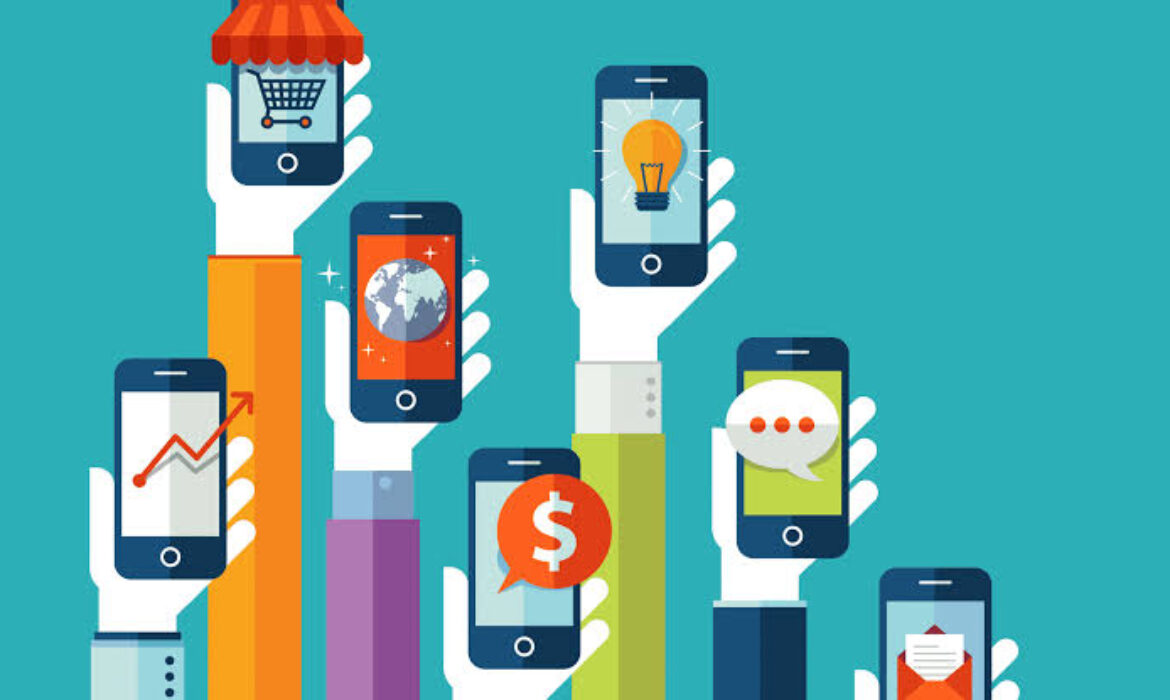081-4797-7173
According to statistics In 2021, the number of mobile users worldwide stood at 7.1 billion, with forecasts suggesting this is likely to rise to 7.26 billion by 2022. In 2025, the number of mobile users worldwide is projected to reach 7.49 billion.
Also as per the survey carried out by Google in partnership with Ipsos OTX MediaCT on 5000+ users, 89% use smartphones throughout the day. Out of this, 89% stay connected,82% research and read news,75% navigate,65% entertain, 45% manage and plan, 70% use mobile devices to make a purchase, 82% notice ads on mobile devices of which around 42% go ahead and click on ads.
Before going into the details of strategies. First, who are mobile users?
Mobile User means a Customer Personnel who is authorized by the Customer to use the mobile application form of the Subscription Services and for whom the Customer has purchased the Subscription Service.
Mobile User means a user who uses the service on a smartphone or tablet developed using iOS or Android.
Recent data suggests that the average person spends 3 hours and 15 minutes on their phone each day.
If you look at current market trends, you will find that there is mass adoption of mobile devices as the primary medium of browsing and searching. Logically, a need arises for mobile marketing strategies to engage with the modern customer. But before we explore strategies, let’s look at some mobile trends that have been affecting how marketing works.
Mobile Marketing Trends for 2024
Getting in on mobile marketing isn’t just a good idea; it’s important these days! And with coverage increasing everywhere, mobile use can only grow in the upcoming years.
Here’s a little snapshot of what we can expect in 2024 and beyond.
More users making purchases on mobile devices: The pandemic of 2020 brought on some significant changes to how customers make purchases. Travel restrictions and quarantines made it necessary to shop online and, since so many people found themselves with some more downtime to sit and play on their phones, it was only natural to start shopping via smartphone too. These days, having a version of your e-commerce site available on an app store is a good strategy for your long-term success.
Mobile video content is increasing: Thanks to video-based apps like TikTok, Instagram, and YouTube, consumers are conditioned to watch and share videos, which brands everywhere are zoning in on with increased video content. And the younger the demographic, the more video content they consume. In case you needed some ideas on how to best market to Gen Z kids.
Customers are shopping more on social media: Social media platforms have evolved into e-commerce hubs, allowing customers to click and shop directly through platforms like Facebook or Instagram. This convenience has naturally led to a rise in social commerce.
Streaming is expected to increase: With the rise of video streaming platforms and various live streaming apps, mobile users are expected to consume more and more streaming content on their devices. This presents an opportunity to start advertising and engaging with users through streaming platforms like Disney+ or Netflix.
User-generated Content is increasing: The trend of user-generated content (UGC) is on the rise too, with customers cheerfully creating and sharing content related to brands and products. This content can serve as an authentic endorsement of your brand to influence other buyers!
AI is on the rise: Artificial intelligence is becoming more and more integrated into mobile marketing strategies. AI chatbots, personalized recommendations, and data analytics are all enhancing user experiences and helping businesses make better and more data-driven decisions.
As consumers increasingly use their smartphones to access their famous stores and content, most website owners have made an effort to make their sites mobile-friendly.
Are you trying to increase your mobile conversion rates but not sure of the best strategies for doing so?
To assist you, we’re going to cover 9 concrete strategies for boosting your mobile conversions. Before we do, though, let’s get clear on what mobile conversion rate optimization is and why it matters.
What is Mobile Conversion Rate Optimization?
Mobile conversion rate optimization is the process of improving your lead generation strategy for mobile to increase the number of people who convert from their mobile devices.
A mobile conversion rate is the percentage of user engagement on mobile apps that completes the desired action.
These conversions can include: Signing up for a newsletter, Attending a webinar, Making a purchaser any other call to action (CTA) that you put in your mobile opt-in campaigns.
The purpose is to ensure that you’re not ignoring your mobile audience as you craft a lead-generation strategy. Your option forms should look good across various smartphone sizes, your load times need lightning-fast and users should be able to navigate your forms on mobile with as much ease as they do on a desktop.
Strategies for Engaging Mobile Users and Improving Conversion
There are lots of strategies but these 9 will help you to increase your conversion and boost your sales less
1. Use Responsive Design
Responsive design allows your website to adapt to different screen sizes and resolutions, ensuring that your website looks great on any device. It’s essential to test your website on different mobile devices to ensure that it’s responsive and optimized for a variety of screens.
2. Use Push-up Notifications
The push notification feature came into existence as it is the most effective way of marketing and re-engaging users to increase conversion rates. The push notifications can be sent directly to users if the app is installed on their devices.
By implementing push notifications features in a mobile app, messages become personalized to the customers. Push notifications can be a powerful tool for engaging mobile users and driving conversions. According to research by Invesp, push notifications can increase app engagement by up to 88%. Use push notifications to promote deals, new products, and other incentives that can encourage users to make a purchase.
3. Leverage Email marketing campaign
Most users check their email multiple times per day, making it an ideal medium to reach users and remind them of your app. To retain users, send personalized email communications that highlight new features or promote exclusive, app-only offers. To re-engage inactive users, offer incentives or reminders of unfinished actions, like abandoned carts, to encourage them to return to the app.
4. Use social proof
Social proof is when consumers follow or get influenced by others’ behavior and copy their actions. For example, if you see your friends or favorite celebrities using a specific product, you would subconsciously be motivated to buy it.
Social proof is a potent psychological phenomenon that influences decision-making. Integrate social proof elements such as customer reviews, testimonials, case studies, and user-generated content to build trust and credibility. This reassurance can greatly influence potential customers to take the desired action.
5. Create Compelling Landing Pages
Your landing page design is the first and foremost element that defines the usability and success of your website. Having a good strategy for building landing pages can help to convert more leads.
Ensure that it is visually appealing, easy to navigate, and optimized for mobile devices. Streamline the design and layout, focusing on clear and concise messaging that highlights the value proposition.
Incorporate persuasive elements such as customer testimonials, trust seals, and compelling call-to-action buttons to encourage visitors to take the desired action.
6. Leverage SMS Marketing
People love to text, so why not get in on that with SMS marketing?
Sending short, engaging text messages to your user list’s mobile phones can be a very effective way to inform them about any sales you have going on!
Consider sending texts to announce:
Sales and discounts, personalized product recommendations, even reminders, customer service etc
7. Utilize Social Media Marketing
Social media platforms play a vital role in mobile marketing. Create engaging and shareable content, optimize your posts for mobile users, and make it easy for customers to interact with your brand. Engaging with your audience through social media not only increases brand awareness but also fosters customer loyalty and trust, ultimately driving conversions.
8. Use The Right Call-to-action
Your call-to-action (CTA) must be unique and stimulating but not pushy. Consumers are exposed to countless CTAs throughout their buying journey. Make sure yours stands out from the crowd.
The placement, design, and wording of your call-to-action (CTA) buttons can significantly impact conversion rates. Experiment with different positions on the page, contrasting colours, and compelling copy to guide visitors towards the desired action. Ensure that CTAs are prominently displayed, easy to find, and communicate the value of taking the next step.
9. Optimize for Mobile Users
With the increasing dominance of mobile devices, optimizing for mobile users is crucial. Ensure that your website and landing pages are mobile-responsive and provide a seamless browsing experience across different screen sizes. Simplify forms and minimize the number of steps required to complete an action. Utilize mobile-specific features such as click-to-call buttons and mobile wallets to facilitate conversions. By prioritizing mobile optimization, you up can capture and convert a significant portion of your audience.
In conclusion, Increasing conversion rates is the ultimate goal for all digital marketers and business owners there, and by executing these ten proven strategies, you can optimize your campaigns and achieve excellent results. After implementing all these strategies aside, you still need to test many other things because what works for others, doesn’t mean, it would work for you as well, your strategies need consistent improvements in your digital marketing efforts.






